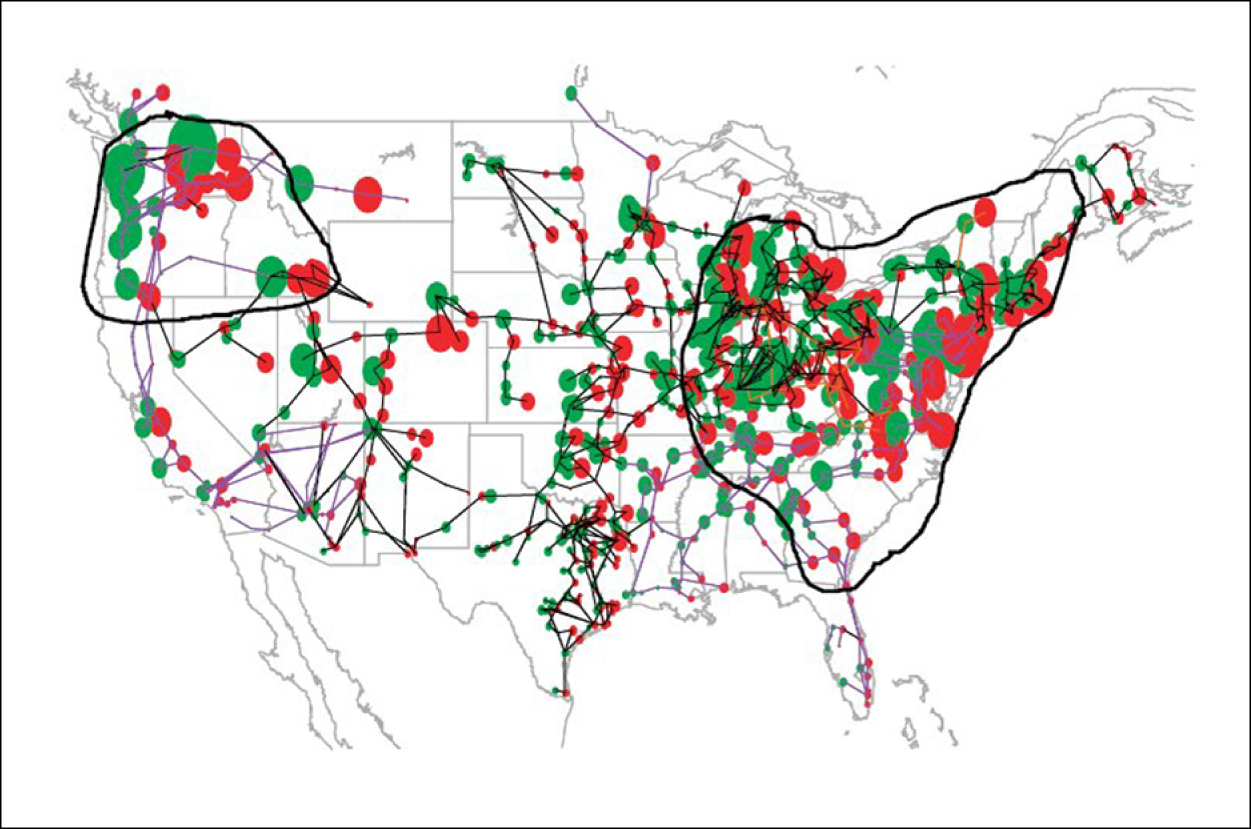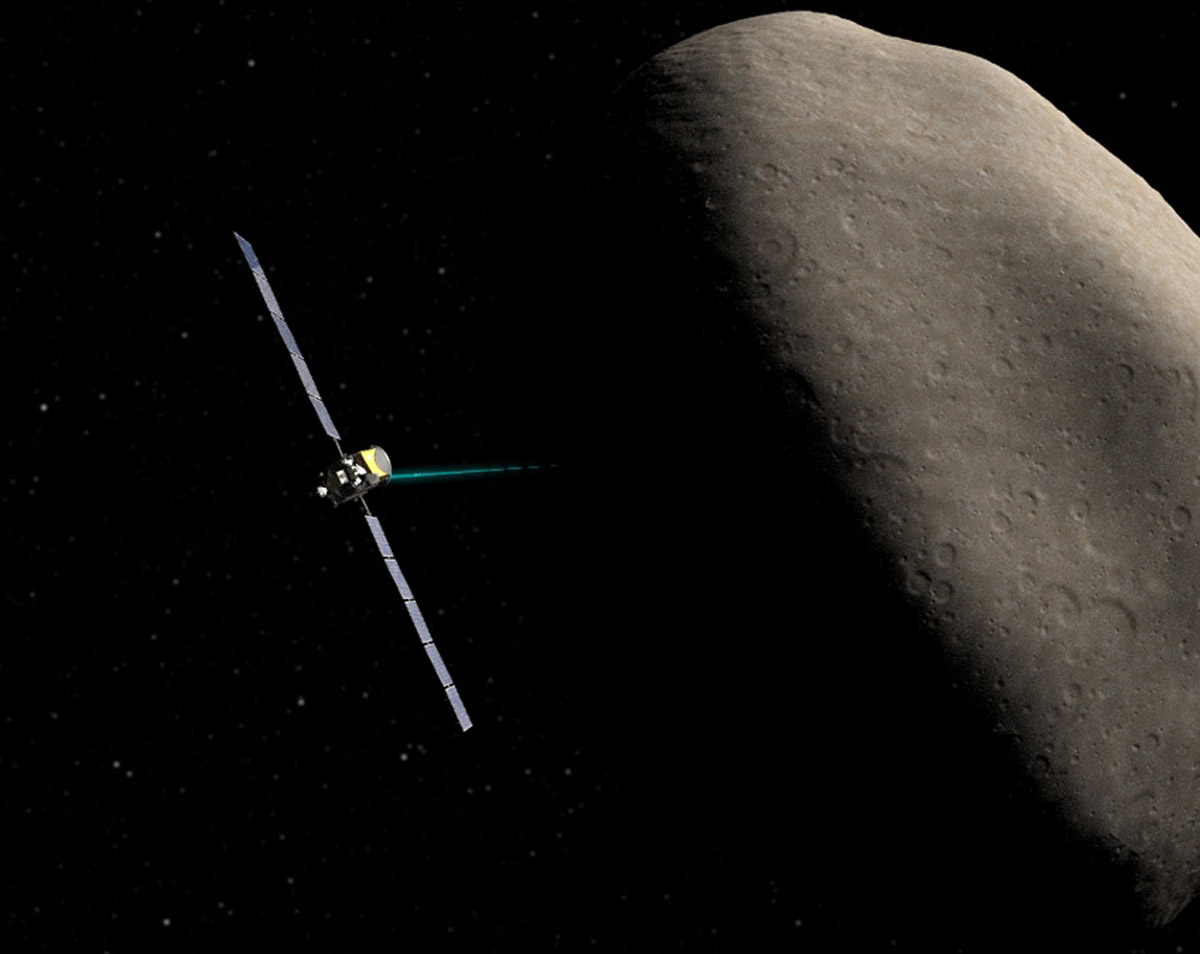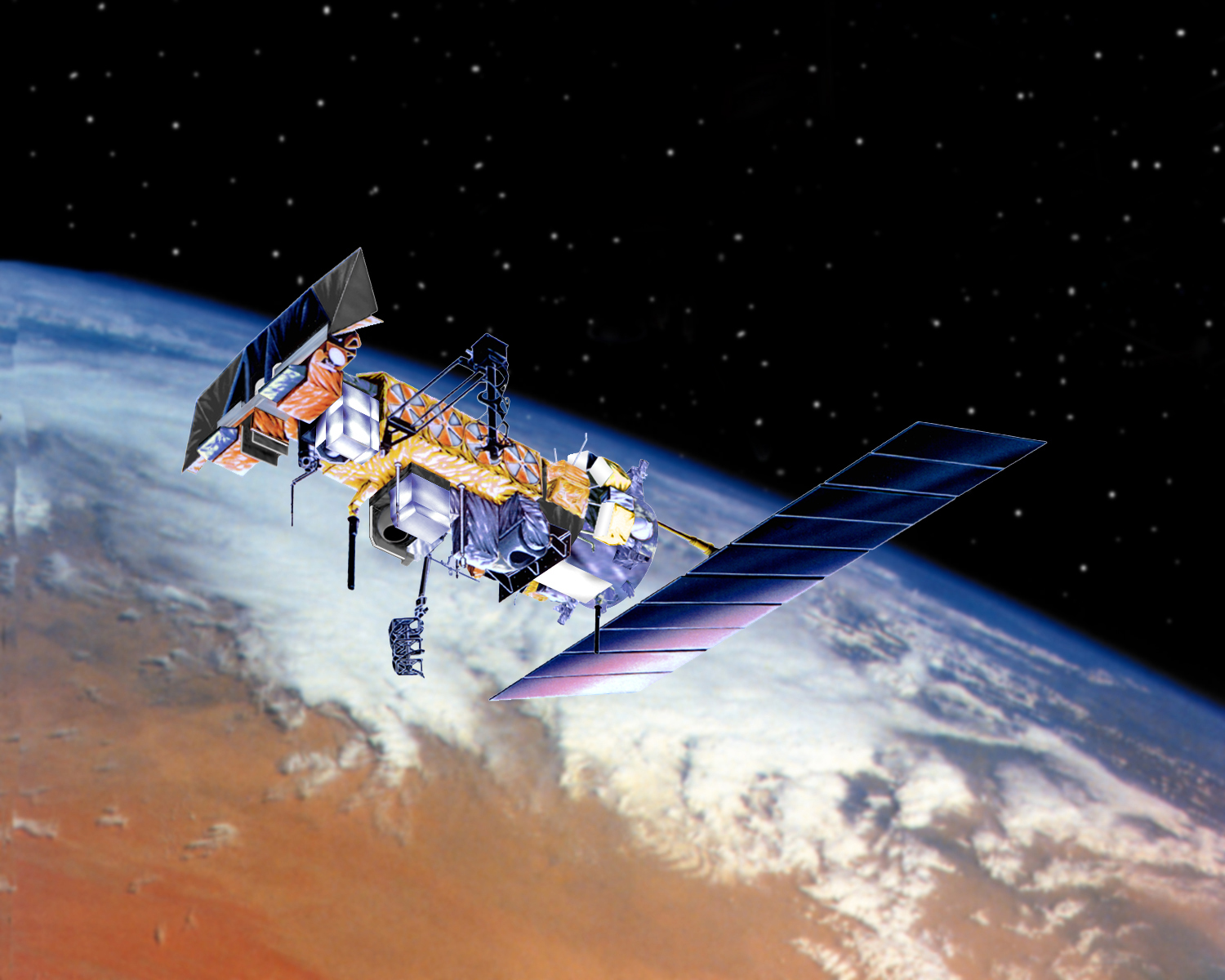Next Launch
Total Students
2,609
Total Launches
683
Eggs Survived
418 61.2%
Rockets Survived
536 78.5%
Jan. 1, 2009
Severe Space Weather
by Dr. Tony Phillips
Did you know a solar flare can make your toilet stop working?
That's the surprising conclusion of a NASA-funded study by the National Academy of Sciences entitled Severe Space Weather Events—Understanding Societal and Economic Impacts. In the 132-page report, experts detailed what might happen to our modern, high-tech society in the event of a “super solar flare” followed by an extreme geomagnetic storm. They found that almost nothing is immune from space weather—not even the water in your bathroom.
The problem begins with the electric power grid. Ground currents induced during an extreme geomagnetic storm can melt the copper windings of huge, multi-ton transformers at the heart of power distribution systems. Because modern power grids are interconnected, a cascade of failures could sweep across the country, rapidly cutting power to tens or even hundreds of millions of people. According to the report, this loss of electricity would have a ripple effect with “water distribution affected within several hours; perishable foods and medications lost in 12-24 hours; loss of heating/air conditioning, sewage disposal, phone service, fuel re-supply and so on."
“The concept of interdependency,” the report notes, “is evident in the unavailability of water due to long-term outage of electric power—and the inability to restart an electric generator without water on site.”
It takes a very strong geomagnetic storm to cause problems on this scale—the type of storm that comes along only every century or so. A point of reference is the “Carrington Event” of August-September 1859, named after British amateur astronomer Richard Carrington who witnessed the instigating solar flare with his unaided eye while he was projecting an image of the Sun on a white screen. Geomagnetic storms triggered by the flare electrified telegraph lines, shocking technicians and setting their telegraph papers on fire; Northern Lights spread as far south as Cuba and Hawaii; auroras over the Rocky Mountains were so bright, the glow woke campers who began preparing breakfast because they thought it was morning!
“A contemporary repetition of the Carrington Event would cause … extensive social and economic disruptions,” the report warns. Widespread failures could include telecommunications, GPS navigation, banking and finance, and transportation. The total economic impact in the first year alone could reach $2 trillion (some 20 times greater than the costs of Hurricane Katrina).
The report concluded with a call for infrastructure designed to better withstand geomagnetic disturbances and improvements in space weather forecasting. Indeed, no one knows when the next super solar storm will erupt. It could be 100 years away or just 100 days. It’s something to think about … the next time you flush.One of the jobs of the Geostationary Operational Environmental Satellites (GOES) and the Polar-orbiting Operational Environmental Satellites (POES) operated by NOAA is to keep an eye on space weather and provide early warning of solar events that could cause trouble for Earth. You can keep an eye on space weather yourself at the National Weather Service's Space Weather Prediction Center, www.swpc.noaa.gov. And for young people, space weather is explained and illustrated simply and clearly at the SciJinks Weather Laboratory, scijinks.gov/weather/howwhy/spaceweather.
This article was provided by the Jet Propulsion Laboratory, California Institute of Technology, under a contract with the National Aeronautics and Space Administration.
 On this power-grid map of the United States, the black-circled areas are regions especially vulnerable to collapse during an extreme geomagnetic storm. Inside those boundaries are more than 130 million people. Credit: National Academy of Sciences report o
On this power-grid map of the United States, the black-circled areas are regions especially vulnerable to collapse during an extreme geomagnetic storm. Inside those boundaries are more than 130 million people. Credit: National Academy of Sciences report o
Feb. 1, 2009
The Future Has Arrived!
by Staff
Ion propulsion. Artificial intelligence. Hyper-spectral imagers. It sounds like science fiction, but all these technologies are now flying around the solar system on real-life NASA missions.
How did they get there? Answer: the New Millennium Program (NMP). NMP is a special NASA program that flight tests wild and far-out technologies. And if they pass the test, they can be used on real space missions.
The list of probes that have benefited from technologies incubated by NMP reads like the Who's Who of cutting-edge space exploration: Spirit and Opportunity (the phenomenally successful rovers exploring Mars), the Spitzer Space Telescope, the New Horizons mission to Pluto, the Dawn asteroid-exploration mission, the comet-smashing probe Deep Impact, and others. Some missions were merely enhanced by NMP technologies; others would have been impossible without them.
"In order to assess the impact of NMP technologies, NASA has developed a scorecard to keep track of all the places our technologies are being used," says New Millennium Program manager Christopher Stevens of the Jet Propulsion Laboratory.
For example, ion propulsion technology flight-tested on the NMP mission Deep Space 1, launched in October 1998, is now flying aboard the Dawn mission. Dawn will be the first probe to orbit an asteroid (Vesta) and then travel to and orbit a dwarf planet (Ceres). The highly efficient ion engine is vital to the success of the 3 billion mile, 8 year journey. The mission could not have been flown using conventional chemical propulsion; launching the enormous amount of fuel required would have broken the project's budget. "Ion propulsion was the only practical way," says Stevens.
In total, 10 technologies tested by Deep Space 1 have been adopted by more than 20 robotic probes. One, the Small Deep Space Transponder, has become the standard system for Earth communications for all deep-space missions.
And Deep Space 1 is just one of NMP's missions. About a half-dozen others have flown or will fly, and their advanced technologies are only beginning to be adopted. That's because it takes years to design probes that use these technologies, but Stevens says experience shows that "if you validate experimental technologies in space, and reduce the risk of using them, missions will pick them up."
Stevens knew many of these technologies when they were just a glimmer in an engineer's eye. Now they're "all grown up" and flying around the solar system. It's enough to make a program manager proud!
The results of all NMP's technology validations are online and the list is impressive: https://www.jpl.nasa.gov/nmp/TECHNOLOGY/infusion.php. For kids, the rhyming storybook, Professor Starr's Dream Trip: Or, How a Little Technology Goes a Long Way gives a scientist's perspective on the technology that makes possible the Dawn mission.
This article was provided by the Jet Propulsion Laboratory, California Institute of Technology, under a contract with the National Aeronautics and Space Administration.
 Dawn will be the first spacecraft to establish orbits around two separate target bodies during its mission-thanks to ion propulsion validated by Deep Space 1.
Dawn will be the first spacecraft to establish orbits around two separate target bodies during its mission-thanks to ion propulsion validated by Deep Space 1.
March 1, 2009
Apollo Upgrade
by Staff
The flight computer onboard the Lunar Excursion Module, which landed on the Moon during the Apollo program, had a whopping 4 kilobytes of RAM and a 74-kilobyte “hard drive.” In places, the craft’s outer skin was as thin as two sheets of aluminum foil.
It worked well enough for Apollo. Back then, astronauts needed to stay on the Moon for only a few days at a time. But when NASA once again sends people to the Moon starting around 2020, the plan will be much more ambitious—and the hardware is going to need a major upgrade.
“Doing all the things we want to do using systems from Apollo would be very risky and perhaps not even possible,” says Frank Peri, director of NASA’s Exploration Technology Development Program.
So the program is designing new, more capable hardware and software to meet the demands of NASA’s plan to return humans to the moon. Instead of staying for just a few days, astronauts will be living on the Moon’s surface for months on end. Protecting astronauts from harsh radiation at the Moon’s surface for such a long time will require much better radiation shielding than just a few layers of foil. And rather than relying on food and water brought from Earth and jettisoning urine and other wastes, new life support systems will be needed that can recycle as much water as possible, scrub carbon dioxide from the air without depending on disposable filters, and perhaps grow a steady supply of food—far more than Apollo life-support systems could handle.
Next-generation lunar explorers will perform a much wider variety of scientific research, so they’ll need vehicles that can carry them farther across the lunar surface. ETDP is building a new lunar rover that outclasses the Apollo-era moon buggy by carrying two astronauts in a pressurized cabin. “This vehicle is like our SUV for the Moon,” Peri says.
The Exploration Technology Development Program is also designing robots to help astronauts maintain their lunar outpost and perform science reconnaissance. Making the robots smart enough to take simple verbal orders from the astronauts and carry out their tasks semi-autonomously requires vastly more powerful computer brains than those on Apollo; four kilobytes of RAM just won’t cut it.
The list goes on: New rockets to carry a larger lunar lander, spacesuits that can cope with abrasive moon dust, techniques for converting lunar soil into building materials or breathable oxygen. NASA’s ambitions for the Moon have been upgraded. By tapping into 21st century technology, this program will ensure that astronauts have the tools they need to turn those ambitions into reality.
Learn more about the Exploration Technology Development Program at www.nasa.gov/directorates/esmd/aboutesmd/acd/technology_dev.html. Kids can build their own Moon habitat at spaceplace.nasa.gov/en/kids/exploration/habitat.
This article was provided by the Jet Propulsion Laboratory, California Institute of Technology, under a contract with the National Aeronautics and Space Administration.
 The Chariot Lunar Truck is one idea for a vehicle equal to the lunar terrain. Each of the six wheels pivot in any direction, and two turrets allow the astronauts to rotate 360°.
The Chariot Lunar Truck is one idea for a vehicle equal to the lunar terrain. Each of the six wheels pivot in any direction, and two turrets allow the astronauts to rotate 360°.
April 1, 2009
Swiss Army Knife of Weather Satellites
by Staff
Spotting volcanic eruptions, monitoring the health of crops, pinpointing distress signals for search and rescue teams.
It’s not what you might expect from a weather satellite. But these are just a few of the abilities of NOAA’s newest polar-orbiting weather satellite, launched by NASA on February 6 and turned over to NOAA for full-time operations on February 26.
Formerly called NOAA-N Prime and now renamed NOAA-19, it is the last in its line of weather satellites that stretches back almost 50 years to the dawn of the Space Age. Over the decades, the abilities of these Television Infrared Observation Satellites (TIROS) have gradually improved and expanded, starting from the grainy, black-and-white images of Earth’s cloud cover taken by TIROS-1 and culminating in NOAA-19’s amazing array of capabilities.
“This TIROS series has become quite the Swiss army knife of weather satellites, and NOAA-19 is the most capable one yet,” says Tom Wrublewski, NOAA-19 Satellite Acquisition Manager at NASA’s Goddard Space Flight Center in Greenbelt, Maryland.
The evolution of TIROS began in 1998 with NOAA-K. The satellites have carried microwave sensors that can measure temperature variations as small as 1 degree Celsius between Earth’s surface and an altitude of 40 kilometers—even through clouds. Other missions have added the ability to track large icebergs for cargo ships, monitor sea surface temperatures to aid climate change research, measure the amount of ozone in Earth’s protective ozone layer, and even detect hazardous particles from solar flares that can affect communications and endanger satellites, astronauts in orbit, and city power grids.
NOAA-19 marks the end of the TIROS line, and for the next four years it will bridge the gap to a new series of satellites called the National Polar-orbiting Operational Environmental Satellite System. NPOESS will merge civilian and military weather satellites into a single system. Like NOAA-19, NPOESS satellites will orbit Earth from pole to pole, circling the planet roughly every 100 minutes and observing every location at least twice each day.
NPOESS will have yet more capabilities drawn from its military heritage. Dim-light sensors will improve observations of the Earth at night, and the satellites will better monitor winds over the ocean — important information for ships at sea and for weather and climate models.
“A lot more capability is going to come out of NPOESS, improving upon the 161 various environmental data products we already produce today,” Wrublewski says.
Not even a Swiss army knife can do that many things, he points out. For more on the NPOESS1, check out http://www.npoess.noaa.gov. Kids can find out about another NOAA satellite capability—tracking endangered migrating species—and play a fun memory game at http://spaceplace.nasa.gov/en/kids/poes_tracking.
1JPSS was established in the President's Fiscal Year 2011 budget request (February 2010) as the civilian successor to the restructured National Polar-orbiting Operational Environmental Satellite System (NPOESS). As the backbone of the global observing system, JPSS polar satellites circle the Earth from pole-to-pole and cross the equator about 14 times daily in the afternoon orbit - providing full global coverage twice a day.
This article was provided by the Jet Propulsion Laboratory, California Institute of Technology, under a contract with the National Aeronautics and Space Administration.
 The new NOAA-19 is the last and most capable in the long line of Television Infrared Observation Satellites (TIROS).
The new NOAA-19 is the last and most capable in the long line of Television Infrared Observation Satellites (TIROS).